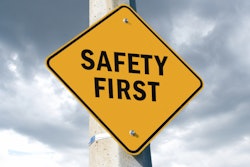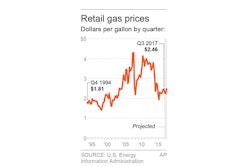Many plant and safety managers are facing company-wide mandates to reduce costs in every aspect of their operations. Personal protective equipment (PPE) often becomes the target for these cost-cutting measures because decision makers may not fully understand the impact of changing out PPE and how it affects worker safety.
Managers question why they should pay a certain price for a PPE product when a similar looking product is available for 10 to 25 percent less. Even though the latter product may have a lower purchase price, it may not perform as well, which can lead to increased worker injuries and lower productivity. Choosing products that are designed to provide the protection needed for specific tasks will help encourage compliance and decrease the likelihood of companies receiving OSHA citations and incurring costly fines.
Injuries And Their Causes
Ansell recently surveyed 151 safety, plant and human resource managers and others who participated in an educational webinar on PPE. This question was asked: What types of hand injuries are most common at your company/facility? Below are the responses:
- Cuts and Lacerations — 133
- Contusions and Pinching — 55
- Repetitive Motion Injuries (e.g., carpal tunnel) — 52
- Chemical Exposure — 27
- Dermatitis — 17
- Vibration Syndrome — 6
The above responses do not include minor cuts and scrapes that may require a visit to the plant nurse. Even if no major medical expenses are incurred, injuries may still cost organizations time and money and negatively impact a company’s productivity and its bottom line. Allergies—particularly latex allergies — can also disrupt employee job performance and may result in companies seeking products made with synthetics and other alternative materials.
Ansell asked the same respondents: Why do you feel injuries occur at your company/facility?
- Workers are not wearing PPE (noncompliant) — 87
- Workers have the wrong PPE for the task — 21
- PPE does not provide the level of protection needed — 16
- Workers rotate jobs — 15
- Manufacturing process changes — 7
- PPE has reached the end of its serviceable life — 5
Balancing Costs, Compliance and Protection
The above responses confirm that workers who are injured often are not wearing PPE. The question then becomes: how can a company provide workers with protective products that they are willing to wear and that will keep them safe, productive and the organization compliant while meeting management mandates for cost reductions?
Make Safety the #1 Priority – No matter what the application, worker safety should always remain a company’s primary concern—whether workers need protection from cut hazards, chemicals, noise, falls, heat or cold. If companies select products such as gloves to protect workers from cuts, decision makers must understand the application in which the product will be used, the level of protection required for the task and the specific cut standard in the associated country.
In the European market, for example, gloves are evaluated for cut levels according to EN 388, the mandatory performance standard as regulated by the European Committee for Standardization (CEN). The U.S. uses method F2992-15 for evaluation, which was developed by the American Society for Testing and Materials (ASTM).
Managers should understand the differences in these test standards and the real-life performance of a specific product (through practical trials) when evaluating PPE. This knowledge will enable them make a well informed decision and choose the optimum product to meet the job requirements.
Examine Functionality — All PPE should help workers perform their jobs. Depending on the application, gloves, for example, may need to provide certain levels of dexterity, tactile sensitivity and/or grip to enhance worker productivity. PPE should also provide adequate levels of protection to the end of the product’s projected service life to ensure worker safety.
Consider Personal Factors — PPE products that are comfortable and fit well will encourage workers to wear the products for long periods and help ensure compliance. Many glove manufacturers have added half sizes to their product offerings to meet specific market requirements. Managers should keep in mind that glove sizes can change during laundering, which could affect worker comfort.
Demand Quality Products — High quality, branded PPE can help improve worker performance and potentially offer a longer service life. Even though quality PPE may cost more initially, it may cost less in the long term as workers benefit from added protection. Companies can often extend the service life of PPE products such as gloves and apparel by laundering them.
Test and Verify All PPE Products — Don’t take a supplier’s word about how well certain PPE products will perform. Confirm products’ performance level by conducting small scale tests within your plant or consult with third testing facilities.
Cutting Costs With Controls
Many companies give workers the freedom to decide when to dispose of gloves and other PPE and replace them with new products. While workers often enjoy this flexibility, the practice has proven costly since individuals typically have no guidelines regarding product disposal and may discard PPE that is still highly serviceable.
Workers, for example, may decide to get new gloves from a tool crib every time they take a break or change jobs. Or, they may believe they need new gloves every time the product they are wearing becomes slightly soiled. This lack of control often leads to higher glove usage, which can cost more.
Implementing a system that requires workers to be more accountable by returning used PPE and signing out new products may eliminate premature disposal. This type of system also helps management ensure that workers are wearing the right PPE for the task.
Vending machines are another option to help control product usage and disposal. Employees swipe their badge to receive the proper hand protection or other PPE for their task or area. The machines allow management to monitor how many gloves employees wear (or do not wear), which can help drive compliance.
Laundering Can Save Money
Companies can reduce PPE costs by laundering products such as gloves and apparel, with long-term savings depending on the initial product costs and the number of times the product can be laundered. Plants, for example, can greatly reduce their costs if they pay $20 for each pair of gloves they provide to 100 workers. Laundering the product twice (at 60 cents per laundry cycle) will cost $1.20 compared to the expense of product replacement.
The number of times a product can be laundered will depend on the application in which it is used, how soiled the product was prior to laundering and the level of soil removed during laundering. Most glove and apparel manufacturers provide laundering instructions for their products since improper laundering may compromise a product’s protective qualities.
Summary
Managers must make well informed decisions to ensure they are choosing the optimum product for the task, which will help keep operational and injury expenses to a minimum. The right PPE will also decrease the potential for injuries that may result from introducing inferior products on the shop floor.
Lower quality PPE products that make unsubstantiated claims about their protective abilities may actually cost more in the long term in the form of greater injuries, lower productivity and non-compliance. Companies can reduce the likelihood of expensive OSHA fines by providing workers with PPE from reputable manufacturers that back their products with research, testing and service.
A comprehensive, plant-wide PPE assessment can identify unexpected opportunities to reduce PPE costs while providing workers the highest level of on-the-job protection. A comprehensive assessment can also help plant facilities evaluate maintenance, repair and operating expenses against operational impact to achieve a profitable balance.
This article originally appeared on the Grainger Safety Record here.






















